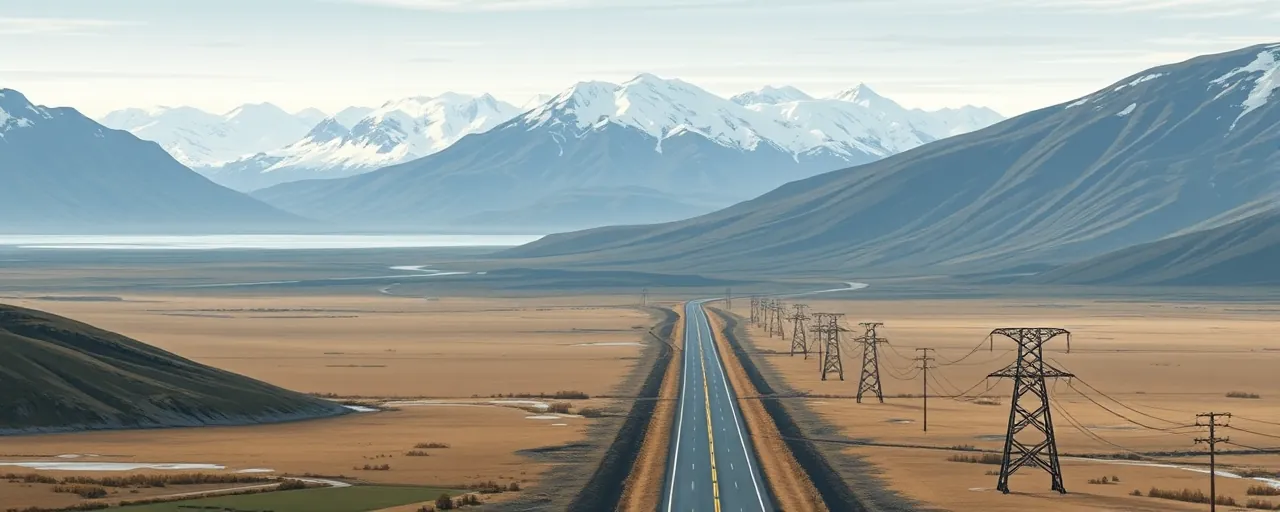A Bold Strike for American Prosperity
Alaska’s vast wilderness holds the key to America’s energy future, and President Donald J. Trump knows it. With Secretary of the Interior Doug Burgum at the helm, the Department of the Interior is tearing down decades of bureaucratic roadblocks to tap into the state’s untapped riches. The National Petroleum Reserve and the Arctic National Wildlife Refuge are no longer just pretty postcard scenes; they’re about to become powerhouses of economic growth and national security. This isn’t some timid half-measure. It’s a full-throttle push to make America the world’s energy titan, and Alaska’s leading the charge.
For too long, Washington’s heavy hand has choked Alaska’s potential, locking away resources that could fuel homes, power industries, and fill state coffers. Burgum’s plan to open 82% of the Petroleum Reserve and the entire Coastal Plain for oil and gas leasing isn’t just policy; it’s a declaration of independence from foreign energy dependence. Add in the Ambler Road and Alaska LNG Pipeline projects, and you’ve got a recipe for jobs, lower energy costs, and a stronger America. The left will scream about polar bears and melting ice, but this is about real people, real paychecks, and real power.
Jobs and Dollars Over Empty Promises
The numbers don’t lie. The Alaska LNG Pipeline alone could pump $16 billion into the economy during its first phase, slashing natural gas prices from a punishing $8.69 per million BTU to a wallet-friendly $2.23. That’s not some distant dream; it’s thousands of construction jobs and cheaper energy bills for Alaskans shivering through brutal winters. Meanwhile, the Ambler Road will unlock a treasure trove of copper, zinc, and gold, turning a remote mining district into an economic engine. These aren’t handouts; they’re hard-earned wins for a state that’s been stiffed by federal meddling for decades.
Contrast that with the Biden years, when policymakers in D.C. tied up 28 million acres in red tape, citing vague environmental gripes and subsistence concerns. Governor Mike Dunleavy had to drag the feds to court just to defend Alaska’s statehood rights. Trump’s team gets it: Alaska isn’t a museum exhibit; it’s a living, breathing state with people who deserve prosperity, not preservation. The Trans-Alaska Pipeline Corridor and Dalton Highway land transfers are a middle finger to that old guard, paving the way for projects that’ll keep Alaska humming for generations.
The Green Lobby’s Hypocrisy Exposed
Cue the predictable outrage from environmentalists clutching their solar panels. They’ll claim oil rigs in the Arctic will doom caribou and flood coastlines. Yet the Arctic’s been warming four times faster than the planet for years, long before Trump’s drill bits hit the ground. Oil and gas aren’t the apocalypse; they’re the backbone of an economy that keeps lights on and planes flying. The Bureau of Land Management isn’t tossing out protections; it’s balancing them with the reality that America needs fuel now, not in some utopian renewable future.
And let’s talk spills. The tech’s better than ever; cleanup’s faster, risks are lower. Compare that to the green crowd’s darling wind farms slicing up birds or solar arrays frying desert ecosystems. Indigenous communities get hit hardest by this double standard; they’re promised clean energy riches, but the EPA’s $20 million solar sprinkle barely dents their energy costs. Meanwhile, LNG jobs and cheaper gas offer tangible lifelines, not feel-good photo ops. The choice is clear: practical progress trumps performative panic.
A Legacy of Strength Restored
This isn’t new territory for Trump. Back in his first term, he turned the shale boom into a global power play, making the U.S. a net exporter by 2019 and flooding Europe with LNG when Russia flexed its muscles. By 2023, America was pumping 22% of the world’s oil, flexing muscle that OPEC couldn’t ignore. Burgum’s moves echo that swagger, shrugging off the Paris Accord’s shackles and betting big on fossil fuels. Sure, Gulf nations grumbled, and domestic prices spiked from export focus, but the payoff was leverage, security, and a roaring economy.
Alaska’s history backs this up. The Prudhoe Bay find in ’68 and the Trans-Alaska Pipeline in the ’70s turned a rugged frontier into an energy giant. Native corporations cashed in, but not without fights over land and spills. Today’s smarter, tougher approach learns from that, delivering wealth without the chaos. Dunleavy’s lawsuits against Biden’s land grabs prove the state’s done playing nice. Trump’s vision, executed through Burgum, isn’t just policy; it’s a lifeline to a past where America didn’t apologize for winning.
The Stakes Are Sky-High
America’s at a crossroads. Cling to the old federal chokehold, and we’re stuck begging Venezuela or Saudi Arabia for scraps while Alaskans scrape by. Unleash Alaska’s reserves, and we’re talking energy independence, a geopolitical edge, and a paycheck boom for a state that’s earned it. The BLM’s plan isn’t reckless; it’s a calculated gut punch to decades of overreach. Congress saw this coming in 2017 with the Tax Cuts and Jobs Act, greenlighting Coastal Plain leasing. Trump’s delivering on that promise, and Burgum’s swinging the hammer.
Opponents will wail about ecosystems and Indigenous rights, but they’re dodging the real story. Subsistence life’s already battered by climate shifts and fish shortages; energy cash can fund fixes that green platitudes can’t touch. Alaska’s not a pet project for D.C. elitists; it’s a powerhouse ready to roar. This is about guts, growth, and getting America back on top. Trump’s bet on Alaska isn’t just bold; it’s the shot we need to dominate the 21st century.
